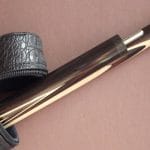Pool cues have come a long way since their inception. While they started as simple wooden sticks, they’ve since then evolved into sophisticated instruments of precision, thanks to advances in materials and manufacturing. Let’s trace this fascinating journey of pool cues from traditional craftsmanship to cutting-edge technology.
The Early Days of Solid Wood Cues
Pool cues began their story as solid pieces of wood, typically crafted from maple, ash, or other hardwoods. These early cues were essentially carved sticks—functional but far from perfect. Skilled craftsmen would shape each cue by hand, creating unique pieces that reflected their individual artistry.
However, early wood cues came with significant drawbacks. They were prone to warping when exposed to humidity changes, making consistent shots nearly impossible over time. The natural grain patterns also created inconsistencies in weight distribution, affecting accuracy. Many players found themselves constantly battling their equipment rather than focusing on their game.
The Rise of Laminated Cues
The introduction of laminated wood construction marked a major breakthrough in cue technology. By bonding multiple thin layers of wood together, manufacturers could create cues that were far more stable than their solid counterparts.
Laminated cues addressed many issues that plagued earlier designs. The cross-grain construction significantly reduced warping, while the layered approach allowed for better weight distribution. Players suddenly had access to cues that maintained their straightness and feel over extended periods, revolutionizing the consistency of their gameplay.
The Advent of Fiberglass and Composite Materials
The mid-20th century brought another significant shift with fiberglass and composite materials entering the pool hall. These synthetic materials offered advantages that wood simply couldn’t match—they were virtually immune to environmental changes and provided unprecedented consistency.
Fiberglass cues became particularly popular among casual players and pool halls due to their durability and low maintenance requirements. Unlike wood, these cues didn’t need regular conditioning or careful storage. They could withstand the rough handling of busy recreational facilities while maintaining their performance characteristics.
Carbon Fiber Revolution
While wooden pool cues are still used in some capacity today, the cutting-edge material of choice is now carbon fiber, representing the pinnacle of cue stick technology. These high-tech materials offer an unbeatable combination of lightness, strength, and precision, capturing the attention of professional players worldwide.
Carbon fiber cues provide incredibly consistent hits due to their uniform density and low deflection properties. They’re also remarkably lightweight, reducing player fatigue during long sessions. Still, it’s worth noting that there are still pros and cons to carbon fiber cues. Despite this, many professionals now swear by carbon fiber for its ability to deliver exact power transfer and minimal vibration upon impact.







